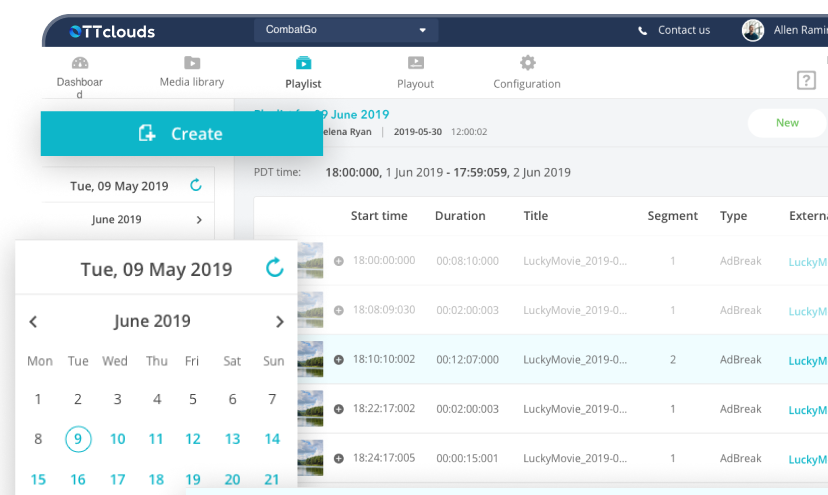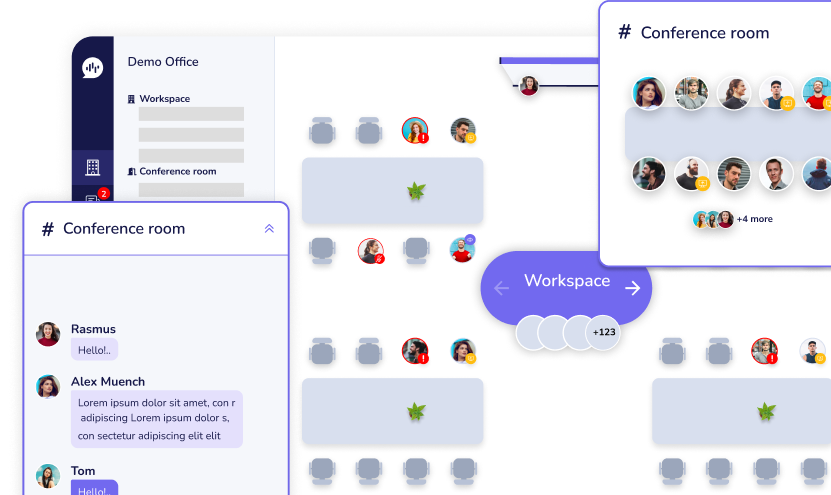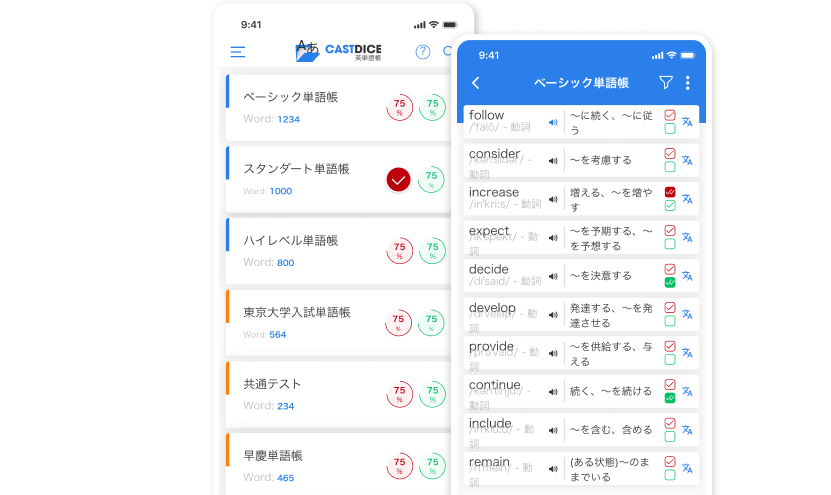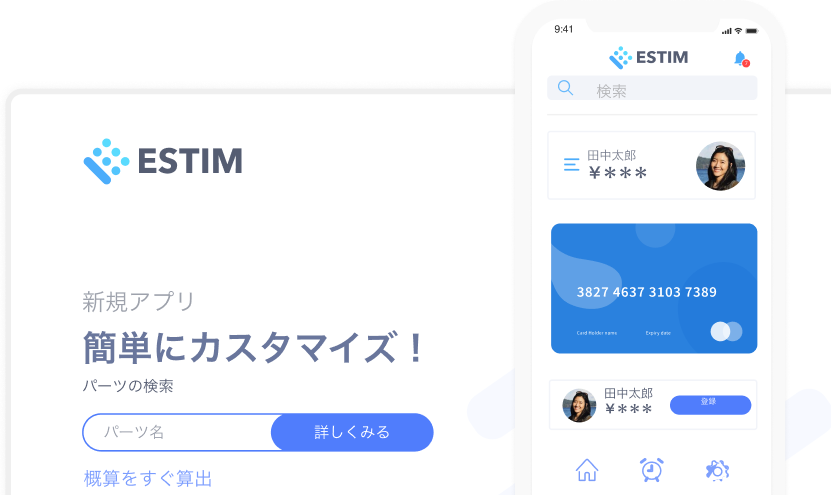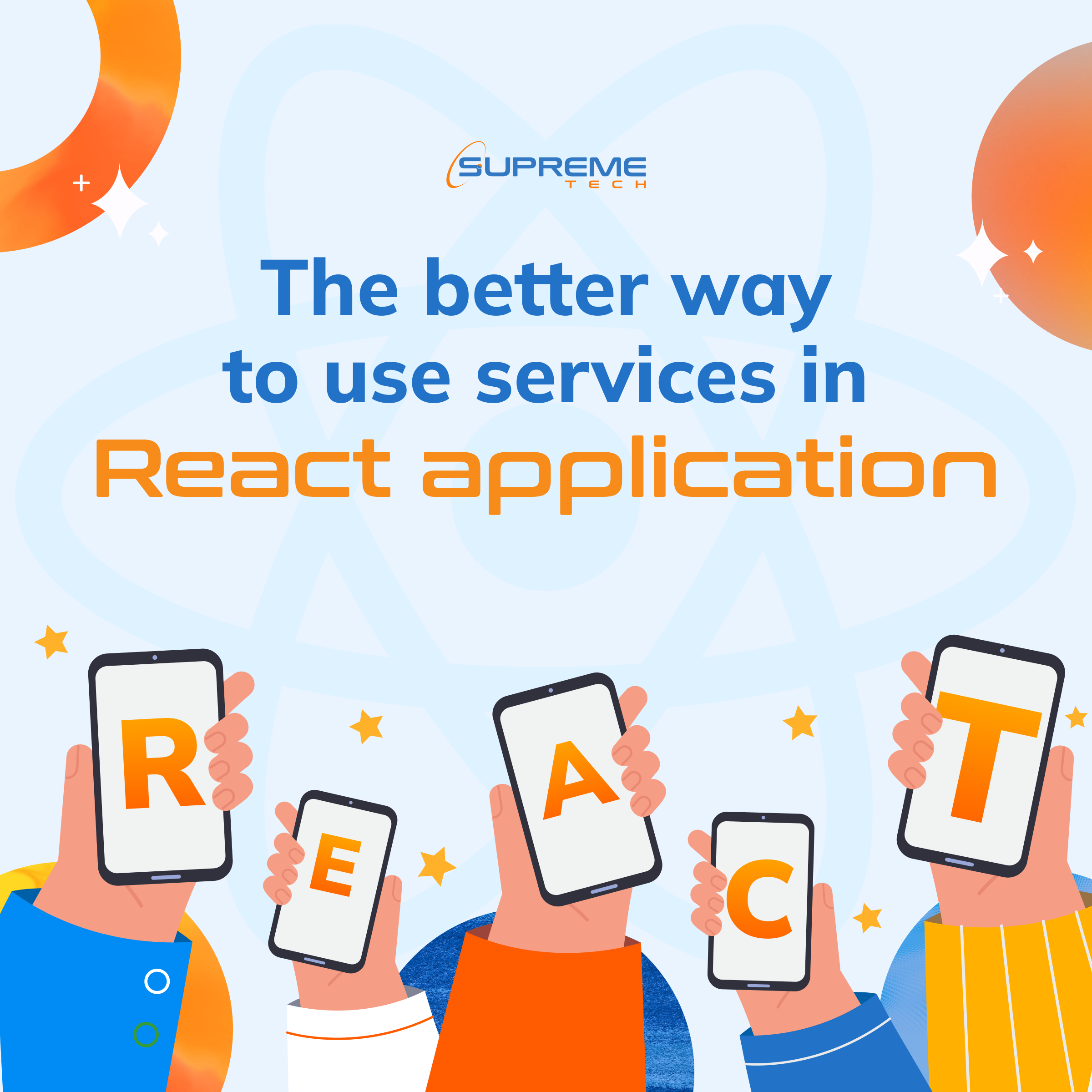The History of Loyalty Point Culture in Japan and What Businesses Can Learn From It
01/10/2025
756
Table of Contents
In Japan, loyalty point culture has become second nature. From everyday shopping to train rides and online payments, points are deeply rooted into daily life in a way that few other countries can match. What started with simple paper stamps more than a century ago has evolved into mobile-first ecosystems that shape how people shop, save, and even invest.
This article takes you through the fascinating history of loyalty point culture in Japan, how the digital era is reshaping the habit, the many ways consumers now earn and use points, and the vibrant poikatsu subculture that has turned point collecting into a lifestyle.
The Roots of Japanese Loyalty Point Culture Obsession
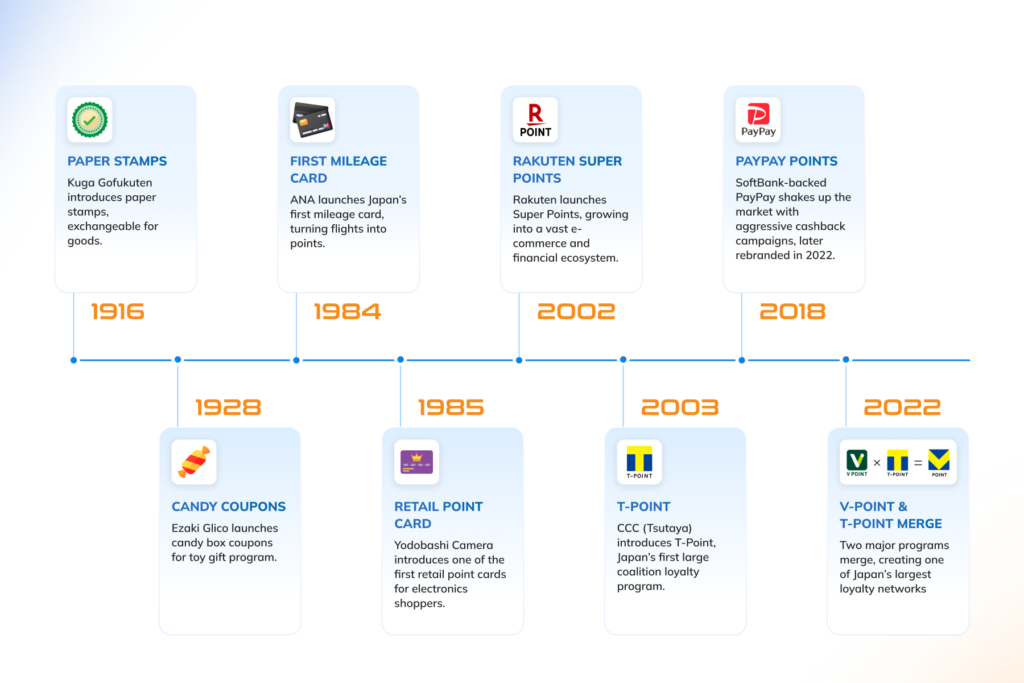
Japan’s passion for loyalty points has a surprisingly long history. The very first known program dates back to 1916, when a clothier in Kita Kyushu City, Kuga Gofukuten, rewarded repeat customers with paper stamps that could later be exchanged for goods. In 1928, confectionery maker Ezaki Glico, the company behind the world-famous snack Pocky, took the idea to a national scale. Glico placed coupons inside candy boxes, and children who collected 20 coupons could trade them in for a toy or gift. This strategy turned candy into a fun challenge and built emotional loyalty to the brand.
The loyalty culture grew slowly at first. It wasn’t until the late 1950s that American-style trading stamps arrived in Japan. Trading stamps were small coupons given out by stores for each purchase. Shoppers could paste them into booklets, and when the booklet was full, redeem it for merchandise from a catalog.
By the 1980s, loyalty took a leap forward with the spread of cash cards and credit cards. Card issuers began attaching rewards to encourage spending. In 1984, airline ANA launched its first mileage card, letting travelers turn flights into redeemable points. A year later, in 1985, electronics retailer Yodobashi Camera introduced one of the country’s earliest retail point cards, giving customers a discount on purchases. For shoppers, it felt like free money but for retailers, it was a clever way to keep customers coming back instead of going to another shop.
The movement accelerated quickly. By the late 1990s, loyalty cards were everywhere not only in retail, but also in department stores, hotels, and banks. From this point onward, Japan entered the modern era of nationwide point networks, many of which still dominate daily life today. In 2002, Rakuten launched its Super Points program, first as a simple cashback on its e-commerce site, but soon expanding into a vast ecosystem that covers credit cards, travel bookings, banking, and even mobile services.
Just a year later in 2003, Culture Convenience Club (the company behind Tsutaya video rentals) introduced T-Point, Japan’s first large-scale coalition loyalty program. Suddenly, customers could earn and spend points not just in one store, but across convenience stores, gas stations, restaurants, and online platforms.
In 2007, Seven & i Holdings, operator of 7-Eleven, rolled out Nanaco, a prepaid e-money card that also rewarded shoppers with points for everyday purchases. Ponta, launched in 2010 by Lawson and GEO, later deepened its reach through a tie-up with telecom giant. Meanwhile, NTT Docomo brought its massive subscriber base into the loyalty world with d POINT in 2015, quickly extending the program beyond telecom to retail, dining, and even Amazon Japan.
The latest wave came from the mobile payment boom: in 2018, SoftBank-backed PayPay launched aggressive cashback campaigns that made QR code payments mainstream, later rebranding its system as PayPay Points in 2022.
How Digital Eras is Changing Collecting Loyalty Points Habit of Japanese
Looking back, it’s clear that the tools have changed, but the habit itself has not. From paper stamps in a clothes shop to QR-code payments at a convenience store, Japanese consumers have always loved the small reward that comes with everyday spending. Whether traditional or modern, the joy of earning points remains the same.
A survey by NTT Docomo revealed just how deep point based loyalty program culture runs: over 80% of Japanese people between 15 and 79 years old actively look for ways on how to get loyalty points in their daily shopping. Imagine buying the same bottle of green tea at two different stores. Most people will choose the one that gives them points.
For brands, this shift is both an opportunity and a challenge. On the one hand, digital platforms make it possible to connect loyalty across physical stores, e-commerce sites, and mobile apps, creating powerful ecosystems. On the other hand, companies must be careful: how to apply digital transformation to your business without losing the identity and trust that your brand has built over decades?
The lesson from Japan’s loyalty story is that technology should not erase tradition but it should amplify it. The habit of collecting points has lasted more than 100 years and will continue to last for a long time. Brands that adapt loyalty to new digital platforms while preserving the sense of authenticity will succeed.
Many Interesting Ways Japanese Earn Points
In Japan, how to get loyalty points is no longer just about swiping cards at the cashier. Today, most point based loyalty programs are tied directly to mobile apps, making it possible to collect loyalty points rewards almost everywhere and in surprisingly fun ways.
1. Online Shopping & Mobile payment apps
This is the most common way to get loyalty points, for platforms like Rakuten Ichiba give Rakuten Super Points when you buy anything online, you will often get 1% back, sometimes much more during special “bonus point” events.
Mobile payment apps like PayPay or Rakuten Pay automatically give you points when you pay with your phone. Many Japanese consumers now choose cashless payments not just for convenience, but because every tap of their phone means a few extra points earned.
2. Commuting & Public Transport
The JRE (Japan Rail East) provides a loyalty points program via their Suica card (e-money transport). When using Suica, especially its mobile version, you can earn points with bonus rewards on off-peak hours or repeating use the same train line over ten times a month.
These points aren’t just for travel. They can be earned or redeemed at JRE Mall, convenience stores, food stalls, and vending machines in stations. Travellers can even use them for Suica top-ups or seat upgrades on bullet trains. Since Japanese train stations are filled with shops and vendors, the program feels both convenient and rewarding in everyday life.
3. Streaming, Subscriptions and Digital Content
Even your entertainment choices can earn you point based loyalty rewards. For example, Rakuten integrates its Super Points into its digital ecosystem: buying an eBook, subscribing to a movie streaming service, or even booking an online concert can all add points to your balance.
What makes this powerful is that the points you earn for leisure can later be spent on essentials like groceries or utility bills. This blurs the line between fun spending and serious savings making loyalty points a subtle but effective part of household budgeting.
4. Special Promotions and Bonus Campaigns
One of the reasons point based loyalty programs remain exciting in Japan is the constant stream of promotions. Japanese consumers often treat these events like mini holidays, planning big purchases to match promotion days. The campaigns are usually gamified like “stamp rallies” where collecting digital stamps across partner stores unlocks extra points. It’s not just about saving, it’s about the thrill of chasing the deal. This playful approach keeps loyalty systems fresh and prevents customers getting bored of them.
5. Cross-Industry Ecosystems
What sets Japan apart is how connected loyalty programs have become. Instead of being limited to one store or chain, many systems now span across industries. This ecosystem model makes loyalty programs much more sticky. For businesses, this strategy doesn’t just keep customers coming back, it ties them into a long-term relationship where loyalty points are the “glue” holding everything together.
6. Mobile Apps and Gamification
Japanese loyalty programs have taken full advantage of gamification. For example, PayPay adds lottery-style raffles where every transaction is a chance to win bonus points. Some apps even push eco-friendly missions like bringing your own bag to a store that grants loyalty points rewards for sustainable behavior. This playful style has turned point collection into something closer to a hobby than a financial tool.
>>> Read more related articles:
- Restaurant Mobile Ordering App: Transform or Lag behind the Competition
- How Loyalty Apps Can Improve Customer Lifetime Value (CLV)
Interesting Stories from the Poikatsu Subculture
In Japan, collecting points is not just a financial habit but it’s a hobby, and for some, even a lifestyle. This has given rise to a colorful online subculture, where people swap tips, track campaigns, and share their point-hunting adventures.
There is a huge Japanese influencer called Chuken. On Twitter, he shares strategies on how to maximize loyalty points and proudly calls himself a “point star” He claims to earn over 1 million yen (around $10,000) worth of points a year enough to cover bills, vacations, and even beauty treatments. For him, points are not pocket change, they are a second income stream.
Then there’s Sekko, a single mother who has turned poikatsu into both a money-saving tool and an online persona. Her audience, mainly parents, follows her for hacks like redeeming enough points to get a year-long Disneyland pass for her child. She’s even appeared on national TV shows, proving that loyalty programs in Japan are big enough to push ordinary people into the spotlight.
On YouTube, Ryogakucho has built a following of more than 600,000 subscribers by teaching point-hacking in step-by-step videos. His tutorials cover everything from Rakuten’s Super Point Up system to time-limited campaigns, often delivered with a cartoon mascot cheering along. For many viewers, his channel turns what could be dry financial advice into something closer to entertainment.
While others poikatsu youtubers post daily point-tracking charts, mapping which payment apps or cards are offering the best deals. Fans treat this like checking stock market updates except the currency is loyalty points instead of shares.
Conclusion
The history of loyalty point culture in Japan reveals more than just how rewards have changed over time, it shows how deeply poikasu culture is in consumers’ minds. From stamps and coupons to digital wallets and online platforms, the tools may look different, but the love for points has never faded. For many Japanese consumers, collecting points is not only about saving money, it’s about the fun, creativity, and community that come with it.
And the story doesn’t end here. In the next article, we’ll look at the power of Japan’s major point networks and the rise of custom programs led by retailers and luxury brands, exploring how these systems are shaping the future of loyalty and what businesses worldwide can learn from them.
📩 Read more articles about us here: https://www.supremetech.vn/blog/
☎️Contact us to see how we can support your loyalty app strategy.
Related Blog










